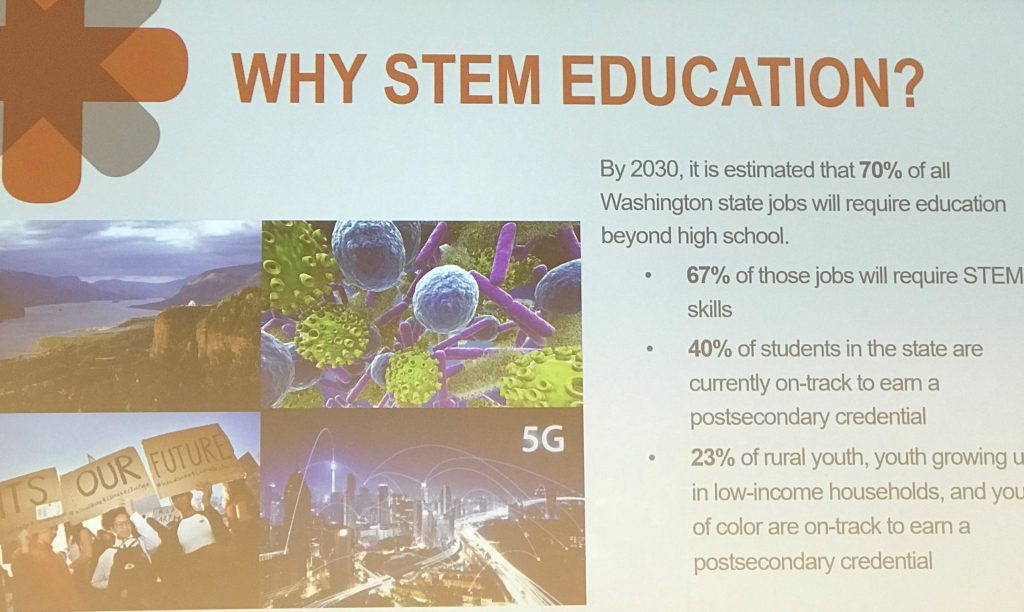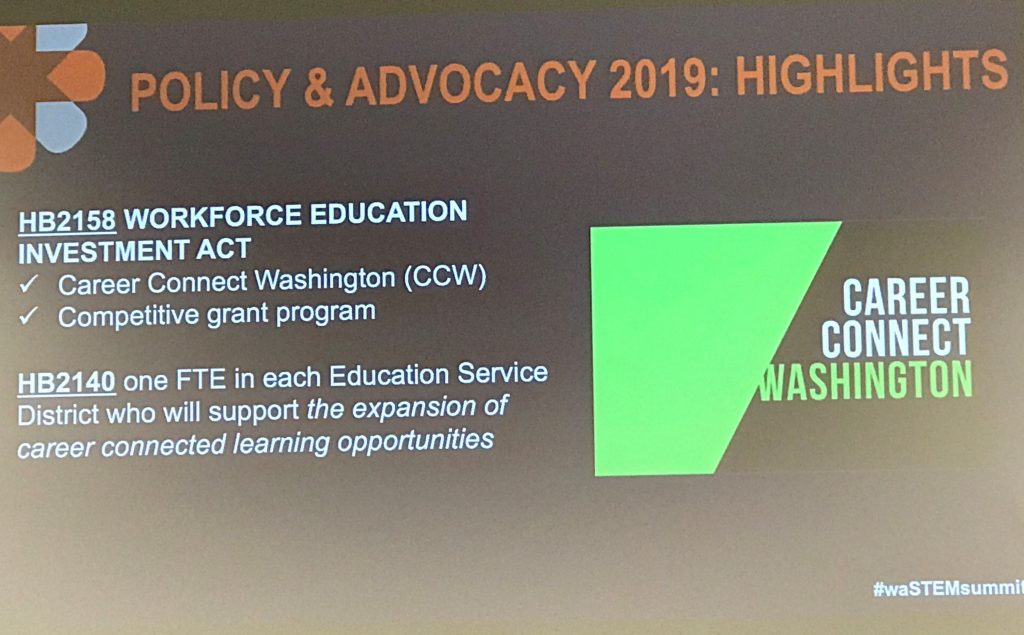
Brief Introduction & Description
The 2019 WA STEM Summit provided the opportunity for STEM leaders from around the region to converge, communicate in person, and collaborate around a common vision for advancing STEM education for all students across Washington State. This work is directly relevant to the work of the Digital Education Leadership program at Seattle Pacific University.

Sessions Attended
The general sessions introduced and emphasized WA STEM’s increased focus on equity work and targeted application. Historically, WA STEM worked to increase awareness around STEM education and the need to focus on this area. That work is transitioning into a focused effort around closing opportunity gaps for all students in STEM. Additionally, in lieu of awareness, WA STEM is now targeting early math interventions and conceptual pedagogy as a foundation for STEM education and high school STEM career pathways. There is a need to broaden and recognize the role that the trades play and the importance of connecting students with STEM careers beyond just a focus on four-year degrees. Finally, the general sessions provided an opportunity to thank partners and express gratitude for the role that they play in the overall work as amplified across all of the regional STEM networks.
The first of three topic-specific sessions that I attended at the conference focused on Computer Science in rural Washington. The presenters shared about work done in the central part of the state in conjunction with the TEALS program. One of the main challenges in rural areas is access to qualified instructors coupled with a general lack of localized professional support. TEALS bridges this gap via video conferencing and by connecting new CS teachers with mentors in major metropolitan centers. These mentors may be several hours away so in-person consultations are rare but online support can be relatively frequent. The TEALS program practicing gradual release of responsibility with the goal of having new CS teachers self sufficient by the end of year three. By developing both the human and physical infrastructure, TEALS proves to be an effective measure for supporting CS education in rural areas.
Centering Equity in Career Pathways session provided an opportunity for me to learn about work central to my job at the secondary level. The emphasis on career pathways means that high school students graduate with a certification in a STEM-focused profession. The modeled example centered on work being done in the Highline school district where local medical facilities host students working on their nursing certification. The overall partnership connected schools, government, nonprofit, and for-profit organizations around this common goal. The presenters were directly involved in the work and spoke to the critical role that community colleges played in this partnership and growing opportunity for community colleges to support this natural blending of CTE and STEM at the secondary level. Finally, the presenters spoke to the need for a multitude of certification opportunities across various careers needed at the high school level and to be open to all students.
The session on Progress and Challenges in Building an Equitable K-12 STEM Ecosystem presented an opportunity to hear from individuals in a variety of different sectors (public, private, nonprofit, etc.) and then to discuss with professionals from across the different area of STEM education. The panel of presenters spoke to the various facets of the ecosystem and the inherent communication gaps that exist among organizations attempting to work in the same space and do similar work. The panel then provided an opportunity for the representatives from different sectors to speak to how they actively support STEM education and what they wish others knew about their work. Most intriguing to me, panel members spoke to what other groups in the ecosystem needed to understand and what was paramount for each to work on and accomplish for the extended ecosystem to be successful. Ultimately, most of the requests centered around increased communication and collaboration in efforts in order to reduce duplication of work and increase efficiency and effectiveness of outcomes.

Brief Summary & Conclusion
As DEL seeks to support effective digital education for fall students, this work naturally dovetails with STEM education efforts. The technology component is a natural overlap of efforts which anchors common threads throughout. My work via DEL and WA STEM amplify the goals of both organizations and empower my efforts to help all students access a quality STEM education.
